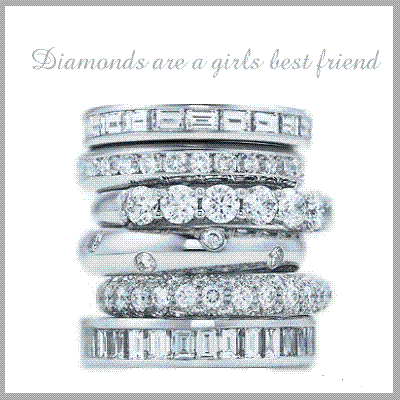About Diamond Certificates
A diamond grading certificate is a report given by an independent and professional gemological laboratory. The diamond is evaluated for its quality, not its value. Every diamond is unique. The certificate will map out all the diamond's recognizable and individual characteristics. Each certificate will include the diamond's color, clarity, carat weight and cut information (see the 4 C's of quality). The grading report also includes a hand-drawn map of the diamond's inclusions. Since no two diamonds are exactly alike you can always check that the certificate matches the diamond.
There are dozens of gemological laboratories handing out certificates but only a few are respected by the diamond trade. Some well-known laboratories include the European Gemological Laboratories (EGL) and the Gemological Institute of America known as GIA
To better understand your certificates here are some commonly used terms
Stone ID: A Unique number representing your diamond. This number is registered in a global database.
Date: The date the report was issued.
Cut and Shape: Shapes other than the standard round brilliant are called fancy shapes or fancy cuts. Their names are based on their shapes. The best known are the heart, marquise, pear-shaped cut, emerald cut, princess cut, oval, and radiant.
Dimensions: The dimensions of the diamond are stated as "largest diameter - smallest diameter X depth" for round shapes and "length X width X depth" for other shapes.
Carat Weight: The standard unit of weight used for gemstones. One carat equals .200 grams (or 200 milligrams). Usually abbreviated ct.
Graining: Graining and grain lines reflect irregularities in the crystal structure. Colorless graining usually does not affect the clarity grade; but white, colored, or reflective graining does.
Proportions: Proportion refers to the angles and relative measurements of a polished diamond. More than any other feature, proportions determine a diamond's optical properties. Studies have shown that table size, crown angle, and pavilion depth have a dramatic effect on a diamond's appearance.
Depth%: The depth of the diamond divided by the average diameter for rounds, or the depth divided by the width of the diamond for other shapes.
Table%: The average size of the table facet divided by the average diameter of the diamond for round shapes, or the width of the diamond for other shapes.
Girdle: The girdle is the outside edge of the outline of the diamond. The certificate indicates the thickness of the girdle relative to the size of the diamond, and the condition either polished or faceted.
Culet: The point at the bottom of the diamond. If the culet is faceted then the certificate indicates the size of the facet relative to the size of the diamond.
Finish: Finish grades represent the quality of the diamond's surface condition (polish), and the size, shape and placement of the facets, including the evenness of the outline (symmetry).
Polish: Indicates the care taken by the cutter in shaping and faceting the rough stone into a finished and polished diamond.
Symmetry: A diamond's symmetry is the arrangement of the facets and finished angles, created by the diamond cutter. Excellent symmetry of a well-cut and well-proportioned diamond can have a great effect on the diamond's brilliance and fire. Grading reports will often state the diamond's symmetry in terms of Excellent, Very good, Good, Fair, or Poor.
Cut: The proportions and finish of the diamond. With the proper proportions, most of the light that enters a diamond is returned revealing the diamond's brilliance and fire. Any deviation of these proportions will compromise the beauty of the stone.
Clarity: Clarity represents the relative absence of inclusions and blemishes in the diamond. Clarity is graded under 10X magnification from Flawless to Included based on the size, nature, position and quantity of the diamond's inclusions.
Color: Assesses to an obvious yellow (Z) when compared to Master Color diamonds.
Pavillion Depth: The distance from the bottom of the girdle to the culet is the pavilion depth. A pavilion depth that is too shallow or too deep will allow light to escape from the side of the stone, or leak out of the bottom. A well-cut diamond will direct more light through the crown.
Tolkowsky Ideal Cut: In the 1920's a Russian Mathematician by the name of Marcel Tolkowsky calculated the proportions of the facets in a round diamond that would bring an ideal balance between brilliance and dispersion. Any deviation from these designs will compromise the beauty of the stone.
Fluorescence: When exposed to ultraviolet light, a diamond may exhibit a more whitish, yellowish or bluish tint, which may imply that the diamond has a property called fluorescence. The untrained eye can rarely see the effects of fluorescence. Diamond grading reports often state whether a diamond has fluorescent properties. Fluorescence is not considered a grading factor, only a characteristic of that particular diamond.
Crown Height: The crown is the upper portion or the top of a diamond.
Diagram: A diagram approximates the shape and cutting style of the diamond. Symbols on the diagram include the type, nature, position and approximate size of a clarity characteristic.
Key to Symbols: Lists the characteristics and symbols shown on the diagram, if present. Remember, a diamond grading certificate from a leading gemological laboratory will insure you get the quality you paid for.

No comments:
Post a Comment